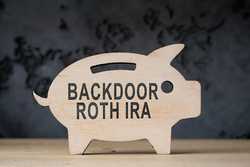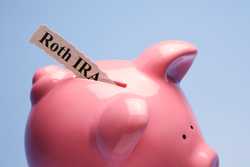Fixed-rate bonds allow investors to generate income and diversify their portfolios while protecting their principal. They often offer better interest rates than other fixed-income investments and provide insulation from the unpredictability and risks of the stock market. The recent increase in yields for most fixed-rate bonds has made them an even more attractive choice for those looking for greater stability and less risk in their investing.
featured partner
featured partner
J.P. Morgan Self Directed Investing
Online trading fees
$0 stock & ETF trades; $0.65/contract options trades; $0 mutual funds trades
Promotion
Get up to $700 when you open & fund an account with qualifying new money. Offer expires 4/15/2025.
INVESTMENT AND INSURANCE PRODUCTS ARE: NOT A DEPOSIT • NOT FDIC INSURED • NO BANK GUARANTEE • MAY LOSE VALUE
What are fixed-rate bonds?
A fixed-rate bond is an account that pays one interest rate for a set period of time known as a “term.” Upon reaching the end of the term, they mature, meaning they stop paying interest, and the principal reverts to the investor. Short-term bonds typically mature in one to three years, intermediate-term bonds take four to 10 years, and long-term bonds last for 10 years or more.
Bonds are issued by federal, state, and local governments and corporations. They are used to fund various operating costs, projects, and initiatives. When you purchase a bond, you essentially loan money to the entity issuing the bond.
In exchange for the loan, you are paid a fixed interest rate on a predetermined schedule. This is known as a “coupon payment,” which is typically made quarterly, semiannually, or annually.
Types of fixed-rate bonds
There are three types of fixed-rate bonds: government, municipal, and corporate. Here’s a closer look at each type.
Government bonds
The federal government issues bonds to raise money to support its plans, finance its projects, and cover expenses. The bonds are considered low risk, as they are backed by the government, but they often pay lower interest rates than other fixed-rate bonds.
Government bonds include savings bonds (EE and I bonds), Treasury bonds, Treasury bills, Treasury notes, and Treasury Inflation-Protected Securities (TIPS).
Municipal bonds
Also called “munis,” municipal bonds are issued by other governmental entities—a state, county (called a “borough” in Alaska and a “parish” in Louisiana), or municipality (a city, town, township, or village)—to cover the cost of operations and local projects such as schools, libraries, roads, and parks. These bonds can provide some tax benefits to the investor.
Corporate bonds
These are issued by corporations to raise capital. They typically pay a higher interest rate than government and municipal bonds but are a riskier investment.
How do fixed-rate bonds work?
Bonds pay the investor a set amount of interest, known as a “coupon rate,” on a predetermined schedule throughout the bond’s term.
For example, take a government bond with a five-year term, 5% interest rate, and $10,000 principal. Each year during the bond term the government will owe the owner 5% of the investment, which comes to $500.00. This could be paid annually ($500 at the end of the term), semiannually ($250 every six months), or quarterly ($125 every three months).
Fixed-rate bonds pros and cons
Pros:
- Higher interest rates than other protected savings vehicles
- Interest rate doesn’t change with the market
- Income is steady, fixed, and can be tax-free
- Low risk for principal
- More liquid than certificates of deposit (CDs)
- Helps with portfolio diversification
Cons:
- Lower returns than riskier investment types, such as stocks or ETFs
- Bond value usually falls when interest rates rise
- Callable bonds can be redeemed before the maturity date if the market interest rate drops below the bond’s rate, ending interest payments
- Principal in danger if the bond issuer defaults, such as when a company goes bankrupt
- Less liquid than stocks
- Yields may not keep up with inflation rate
How do fixed-rate bonds differ from other types of bonds?
Other bonds include floating-rate bonds, which have a variable interest rate that is reset periodically based on a bond index or other benchmark, and zero-coupon bonds, which make one single interest payment at maturity.
Floating-rate bonds usually reset their rates every six months and result in unpredictable income, depending on whether interest rates have risen or fallen. Zero-coupon bonds are bought at less than face value then redeemed for full value at maturity, with the difference constituting the interest paid. Bond owners must prorate that interest annually and pay taxes on it, even though they have not yet received it.
Fixed-rate bonds differ from these by providing the owner with a predictable and regular income. Most government and municipal bonds have a fixed rate (though not all fixed-rate bonds are government or municipal bonds) and can have tax exemptions.
How to select the best fixed-rate bonds
You should first evaluate your investment goals, risk tolerance, time horizon, and tax exposure, then see if they are supported by a particular bond’s features. Don’t purchase anything that doesn’t fit.
Also, always ascertain the issuer’s creditworthiness. The U.S. Securities and Exchange Commission (SEC) registers agencies that rate bonds. The largest of these are currently S&P Global, Fitch Ratings, and Moody’s. Assigned as codes (AAA, Aa, A1, B, etc.), the ratings can be used to assess the quality of the bond and the likelihood it will be repaid. It’s important to note that they are just the agency’s opinions and don't guarantee performance or repayment.
How to invest in fixed-rate bonds
Bonds can be purchased online through companies such as Public or similar online brokers, from your bank, or directly from the U.S. Department of the Treasury.
Many investors choose to purchase bond funds instead of individual bonds. Bond funds are pooled investment vehicles that typically hold many individual bonds, which can reduce the impact of a single bond’s performance. Bond funds tend to have lower costs than purchasing bonds individually.
Alternatives to fixed-rate bonds
There are several alternatives to fixed-rate bonds. High-yield savings accounts, certificates of deposits (CDs), annuities, and real estate investment trusts (REITs) are all less risky, while dividend stocks are riskier.
How are fixed-rate bonds taxed?
Interest earned from corporate bonds and U.S. Treasury bonds is typically taxable at the federal level. Most municipal bonds are exempt from federal income taxes. U.S. Treasury bonds, along with some municipal bonds, are exempt from some state and local income taxes.
TIME Stamp: A fixed-rate bond is one of the more safe and reliable investments available
Fixed-rate bonds can be an attractive choice for investors seeking to preserve capital, mitigate risk, and generate income. They also offer portfolio diversification and some protection from the volatility of stocks. Their risk is low, their liquidity is middling, and their returns are generally safe and predictable, though potentially less lucrative than stocks.
Frequently asked questions (FAQs)
What are the risks associated with investing in fixed-rate bonds?
The top risks associated with fixed-rate bonds are interest rate risk, when the bond's value falls as interest rates rise, and credit risk, when the issuer defaults and fails to pay the interest or principal on time or as originally promised.
Some bonds also risk being called. This possibility will be noted upfront and can happen when the market interest rate drops below the bond’s rate. If this happens, the issuer may shut the bond down and issue a new one at a lower interest rate.
Are fixed-rate bonds suitable for all investors?
Fixed-rate bonds are considered best for those with a low-risk tolerance. However, they can suit anyone who is looking to preserve capital, have a steady cash flow, and diversify their portfolio.
Can I sell my fixed-rate bonds before maturity?
Yes, you can. Current interest rates will determine the rate at which you can sell, which means you could lose money if you sell at a discount (also known as “below par”). You may also have to pay a commission or fee to complete the transaction. Be sure to discuss possible outcomes with your financial advisor before moving forward.






